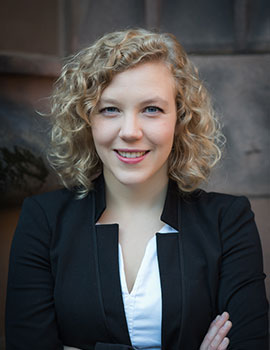845 Third Avenue, 6th Floor | New York, New York 10022
July 24, 2005
Mega-churches’ evoking hostility
By STEFANIE MATTESON
Staff Writer
Franklin Twp. council accused of illegal vote on big development
A corner of the sanctuary is devoted to a game room for children, the prayer room is used for storage and for bridegrooms to get ready for wedding ceremonies, and the offices have shelves reaching to the ceilings.
The rapidly growing Church of the Hills in Bedminster, already filled to capacity, wants to add a 48,000-square-foot addition to the 18,500-square-foot converted horse barn that it uses for worship.
But after two years of hearings, its application for a use variance was turned down by the Bedminster Board of Adjustment in May.
The church’s response: sue.
The church filed suit in Newark federal court on July 1, charging that the Board of Adjustment unlawfully discriminated against it based on creed and placed a substantial burden on its free exercise of religion.
Mounting tension
The Bedminster lawsuit is the latest episode in the long-simmering tension between religious freedom and control over local growth — a tension that is particularly acute in New Jersey, where rapidly growing suburban houses of worship are encountering increasing anti-growth sentiment.
“People do feel invaded,” said Karen Pechilis, an associate professor of religion at Drew University in Madison. “You have masses of people in an area where people are looking for peace and quiet.”
In addition to the Church of the Hills, three other Central Jersey houses of worship with expansion plans are facing opposition:
- The Sri Venkateswara Temple, a Hindu shrine just off Route 202-206 in Bridgewater, which wants to expand.
- The Alliance Bible Church, an affiliate of the Christian and Missionary Alliance denomination, on Mount Horeb Road in Warren, which plans an expansion.
- The Millington Baptist Church in Bernards, which wants to build a new facility.
The Sri Venkateswara Temple has filed suit against the Bridgewater Board of Adjustment. Millington Baptist has been fighting neighbors for seven years. And although Alliance Bible has yet to file its plans with the Warren Board of Adjustment, it is already running into neighborhood opposition.
While Alliance Bible is confident its plans will be approved, Building Committee Chairman Vince Staiger said that if its application is denied, the church “would have a strong legal case.”
Meanwhile, a group of about 600 people opposed to growth in Warren, called Citizens Against Rampant Expansion, opposes the church’s plans and a small group of neighbors concerned about the effect of the church’s expansion on their property values has hired an attorney to represent them.
“The church is far and away too big for the area,” said Elaine Damiano, one of the neighbors who has hired an attorney. “It’s as big as an A&P. We don’t mind them putting up a church, but not of this massive size.”
Fighting bias
In fighting their cases the churches are relying on a powerful weapon, the federal Religious Land Use and Institutionalized Persons Act, commonly known as RLUIPA, which was passed five years ago to prevent discrimination against churches in land-use applications.
And they generally are winning.
“In most of the cases I know about where the church went to court or threatened to, things got settled pretty much in their favor,” said Scott Thumma, a professor of sociology at the Institute for Religious Research of the Hartford ( Conn.) Seminary, a nondenominational theological institution, and a national authority on large churches.
Jared Leland, an attorney for the interfaith public interest law firm, theWashington, D.C.-based Becket Fund for Religious Liberty, who has been directly involved in dozens of such cases, agreed: “I have yet to lose under RLUIPA,” he said. He added that the law is often used as a bargaining tool to settle out of court.
The lawsuit filed by the Church of the Hills relies heavily on the land-use act and, while the Trenton attorney representing the Hindu temple, Frank Petrino, believes the case it filed in state Superior Court in Somerville will be won on land-use law alone, the lawsuit also includes a count based on the land use act, he said.
In Bernards, the land-use act was cited by Superior Court Judge Robert E. Guteri in 2001 when he dismissed a lawsuit filed by neighbors challenging the Planning Board’s approval of Millington Baptist’s preliminary site plan for a 67,390-square-foot complex, including a sanctuary with up to 1,200 seats.
Millington Baptist’s building plans have been stalled by the church’s failure to file the final site plan by the statutory deadline, but given the church’s defense in that case, it is likely that it will again rely on the land-use act if future lawsuits arise.
Caving in
But Princeton attorney Stuart Lieberman, who represents neighbors who oppose Millington Baptist’s plans, said the act’s “bark is bigger than its bite.” Though it may be used to intimidate land-use boards, which have been known to cave in to preserve the public coffers, the boards’ decisions are usually based on sound principles, he said.
“People are afraid to box with a house of worship, and houses of worship take advantage of that unique dynamic,” he said. “That’s the dirty little secret.”
Lieberman, who has followed the Church of the Hills’ application, said it was legitimately denied because it posed a host of environmental problems and that the suit was a “sour grapes” effort that was destined to fail.
The conflicts between churches and neighbors and land-use authorities commonly involve what experts refer to as mega-churches.
The Northeast generally isn’t hospitable ground for mega-churches, Thumma said. The older mainline churches are more entrenched, and the population density doesn’t allow room for huge churches like those built on the outskirts of the sprawl cities of the Sun Belt, which is prime mega-church territory.
Common features
But while the four churches involved in conflicts in Central Jersey are not technically mega-churches, which are typically defined as having congregations of at least 2,000, they do have mega-church characteristics, he said.
These include rapid growth, a congregation that draws from a wide geographic area — the Church of the Hills draws from more than 100 towns, for instance — and activities that extend beyond Sunday morning services. The houses of worship tend to be centers of family and community life as well as places for individual worship, he said.
“A facility that size won’t be just for church services,” Damiano said. “It will be busy every day. And most of the parishioners aren’t even from our town.”
Staiger said, however, that the activity level would be no different than that of a mainline church of its size.
In the case of Christian churches, the mega-church characteristics also include a strong, dynamic preacher, or as Thumma puts it, an “innovative spiritual entrepreneur;” a conservative theological orientation with a heavy emphasis on the Bible; an informal worship style; and a multitude of ministries catering to various needs and interests.
A range of secular attractions, from cafeterias and coffee shops to recreation facilities, is also typical and plays a vital role in attracting new members.
At the Church of the Hills, for instance, the 550 regular congregants can browse in the bookstore, work out in the weight room or play table hockey in the game room. Seventy-five ministries cater to the needs of groups from teens to families to new mothers, offering what experts in the field call a “side door” entry to the church.
Unlike states in which mainline churches are not as established, New Jersey has a long history in which the mainline Christian denominations have played an important role. The unfamiliarity of non-Christian forms of worship and of non-mainline forms of Christian worship are apt to arouse the hostility of neighbors, Thumma said.
“They strike people as odd or abnormal,” he said.
Feeling ‘demonized’
The conflicts can get pretty nasty, Thumma said. The churches, many of whose members are excited about the churches’ growth and mission, in many cases see the towns as standing in the way of God’s work. They feel misunderstood and discriminated against. “In a sense we feel like we’ve been demonized,” Staiger said.
Similarly, Matthew Goerke of Hackettstown, a member of the Church of the Hills who volunteers there as a janitor, seemed baffled at the opposition from neighbors. He made the point that residents could have no better neighbors than a church whose mission it is to change lives by helping people.
“We’re not light industry or a million-square-foot Wal-Mart,” Goerke said. “We’re a church. Everybody agrees the work we do here is worthwhile, but in the same breath they wish it wouldn’t continue. That’s what we can’t understand.”
While some churches that have met with opposition hint at subtle discrimination, the Church of the Hills has charged Bedminster with overt discrimination in granting a variance for a similar expansion to a mainline Christian denomination while denying a variance to the Church of the Hills.
The lawsuit states that the board’s action was based on neighbors’ opposition, which in turn was “rooted in religious animus.”
Board Chairman David Johnson has declined to comment other than to say that the lawsuit was expected, but the board’s decision states that the denial does not place a substantial burden on the church’s exercise of religion, and that the church already practices its religion on a “free and unencumbered basis.”
Grounds for objection
Even in cases where neighbors have no objection to the form of religion being practiced, however, they may still object to a church’s expansion plans because of the potential for increased traffic, noise and lighting, or to the effect of the expansion on the suburban character of the community.
Neighbors and/or zoning authorities in the four Central Jersey communities in which houses of worship are seeking to expand have all objected for these reasons. In Bedminster, the board maintained that although a church is inherently beneficial, the proposed expansion is a “general over-intensive use.”
Bedminster resident Robert Steffens, whose property borders that of the church, is among a small group of neighbors who have opposed the Church of the Hills expansion.
“This has nothing to do with religion,” said Steffens, who is an ordained minister. “I’m in favor of whatever religion a person wants to practice as long as it doesn’t affect me. But as far as I’m concerned it was a farm when I moved in, and it’s been turned into a big business. It’s busy every day of the week.”
The neighbors also may think that they are being outgunned by huge institutions with deep pockets and unlimited resources.
“We feel discriminated against,” said Damiano of the neighbors’ fight with Alliance Bible. “It’s definitely a David and Goliath situation — them being Goliath.”
But lawyers who represent land-use act plaintiffs say that while health and safety concerns are compelling enough reasons for turning down a church’s application for an expansion, concerns such as increased noise, traffic and lighting — or even overall impact on the community — are not.
In Bedminster, the Church of the Hills would have to own 100 acres in order to meet the zoning requirements, an amount the lawsuit charges is “patently unreasonable.”
Failure to please
In its lawsuit the church cites the ways in which it tried to accommodate neighbors’ concerns, none of which were entertained by the Board of Adjustment, Building Committee Chairman Paul Gover said. In recompense, the church will seek legal expenses and damages, which could run into hundreds of thousands of dollars.
“The township basically blew us off completely,” Gover said.
Though it remains to be seen whether the court rules in the Church of the Hills’ favor, Leland of the Becket Fund said zoning regulations often are used as a smokescreen for the practice of a subtle form of discrimination.
“A great variety of religious experience goes on,” agreed the Church of the Hills’ attorney Roman Storzer, who has litigated about 50 such cases across the country, most of them successfully. “Often times, municipalities think they make room for a variety of religious experience, but they have a model of what a church should be.”
Storzer said conflicts between religious institutions and land-use authorities are particularly common in New Jersey for three reasons:
- Density. In the nation’s most densely populated state, churches don’t have the option of building new facilities on the outer fringes of suburbia, as they do, say, in Atlanta or Dallas. Because they are closer to their neighbors, they are more likely to run into local opposition.
- Diversity. The state’s pluralistic culture means that more non-mainline religions and/or denominations are seeking to build or expand religious facilities, thus setting the stage for discrimination. The Hindu Temple and Cultural Society, for instance, has more than 31 temples in New Jersey.
- Abundant land-use laws. In many areas of the country, the zoning regulations are loose, making it easier for churches to expand or build. But because it is more established, New Jersey has a host of laws that local officials can use as justification for turning down churches’ applications.
“There are more land-use regulations in New Jersey than, say, in Montana,” he said.
And the conflicts are bound to increase.
“Whether we likeit or not, very large congregations are viewed as the trend-setters of the contemporary Christian world,” Thumma wrote in a paper on the subject.
Not surprisingly, both the Church of the Hills and Alliance Bible say the only impediment to further growth is the physical limitation posed by their facilities.
“We see churches growing from zero to 5,000 within five years,” Thumma said. “If given a place to expand, the potential is quite great to grow larger.”
Stefanie Matteson can be reached at (908) 707-3136 or [email protected]
from the Courier News website www.c-n.com








